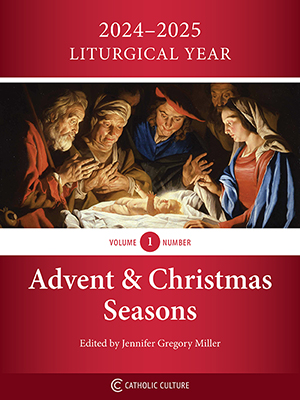Making an 'Offering of Love to God'
The Feast of the Presentation of the Lord points us in the direction of contemplating more intensely the mystery of Christ, the "Light of the world", as an extension of the Solemnities of Christmas and Epiphany. St Luke recalls the event with simple but significant words: "They brought [the Child] up to Jerusalem to present him to the Lord (as it is written in the law of the Lord)" (2:22).
Thus, 40 days after Christmas, the Liturgy has us relive the mystery of the Presentation of Jesus in the Temple with the same wonder as that of the Holy Family of Nazareth, enlightened by the full revelation of that "Child" foretold by the Prophets and proclaimed "the supreme merciful and faithful priest", come "to expiate the sins of the people".
The Child whom the apprehensive Mary and Joseph presented in the Temple was the Incarnate Word, the Redeemer of man and of history!
In celebrating the event that occurred that day in Jerusalem, the Presentation is an invitation to meditate on the mystery of the Child, the Only-Begotten Son of the Father who, by his Incarnation and Passion, became the firstborn of redeemed humanity.
When the elderly Simeon, inspired by God, took the Child Jesus in his arms, he spoke the prophetic words: "Light of the nations and the glory of Israel", at the same time foretelling that the "Messiah of the Lord" would carry out his mission as a "sign of contradiction".
As for Mary, the Mother, she was also to participate in the first person in the Passion of her divine Son. This is the reason why the mystery of consecration is celebrated on the Feast of the Presentation: the consecration of Christ, the consecration of Mary, the consecration of all who set out to follow Jesus for love of the Kingdom.
Consecrated persons and the light of truth
In addressing consecrated persons, St Paul of the Cross, an inspired teacher of God's ways, often recalled that professed Religious also made the total gift of themselves to the Lord on their day of solemn consecration. And he reminded them to always remember the great things God had worked and was continuing to work in them by "attracting to himself" their entire existence.
He also praised the Lord, because divine Love is so great and beautiful that it deserves the most precious gift of the whole person in the unfathomable depths of the heart, as well as in the actual unfolding of daily life.
And he also said that the "Here I am!" of consecrated persons must be modelled on that of Christ and of the Virgin Mary. The consecrated person is thus called to be the light of truth and justice, a witness of solidarity and of peace.
Therefore, St Paul of the Cross, writing to a consecrated woman on 4 August 1738, told her what she should do to live her consecration better and exhorted her to remain closely united to the Lord Jesus, so that her heart would be filled with his purest love and grace in greater abundance.
"My most beloved Daughter in Jesus", he wrote, "may the purest love of Jesus and the effects of his divine grace always be in our hearts. Amen.
"Yesterday, I received a note from you that was dearer to me than the others, because in it I heard the news of some drops of suffering that you are willingly drinking from the loving cup of Jesus.
"Oh how precious are those pains of bones and nerves! Oh, how necessary it is to treasure them.
"But I would also like you in your suffering to empty yourself and to pay no attention to it, not to think about it, not to look it in the face and, above all, I do not want you to let it show, or at least as little as possible; rather, I wish you to appear as best you can with a serene and cheerful expression, as is the custom of those who truly love the Holy Cross".
Importance of humility
He urged her in particular to live her consecration as an offering of love to God: "And I say this so that you will not lose sight of the Supreme Good, but on his Cross be a victim of love wholly united with our sweet Jesus, wholly burned and consumed by the infinite fire of his charity".
The importance of humility in consecration did not escape St Paul of the Cross, and therefore he said again in the same letter: "No, my Daughter, this is a very lofty knowledge, only understood by those who are truly humble of heart and thus more and more in his self-emptying, in the total disregard of self . . ."
"Allow the poor little butterfly, having fluttered around this divine light with the wings of feelings of humiliation and above all of living faith and charity, fly into this most divine light which is God himself and there be burned up, which is more than death, since thus it will not live its own life but in the life and of the life of the Supreme Good".
St Paul of the Cross recalled that the image of Mary, whom we contemplate as she offers Jesus in the Temple, prefigures that of the Crucifixion and anticipates its interpretation.
Indeed, it was on Calvary that the offering of the Son was accomplished, and united with it, that of the Mother. The same sword pierced both Mother and Son, the same pain, the same love.
It is in this way that the Mother of Jesus became Mother of the Church. Her pilgrimage of faith and consecration is the model for every baptized person. This applies particularly to those who embrace the consecrated life.
In thanking Mary, Mother of Christ and our Mother, for the tender care with which she accompanied him on the journey through life, St Paul of the Cross also asked her to present him continuously to God so that his life, consumed by Love, might be a living and holy sacrifice and pleasing to the Lord.
This item 7917 digitally provided courtesy of CatholicCulture.org






